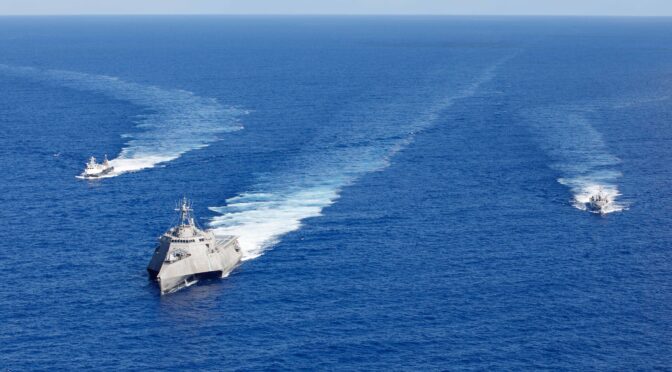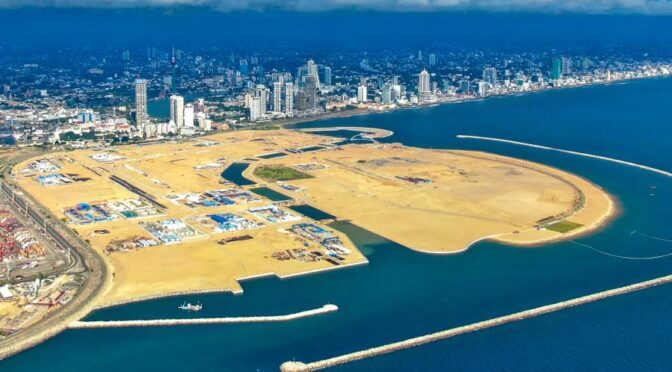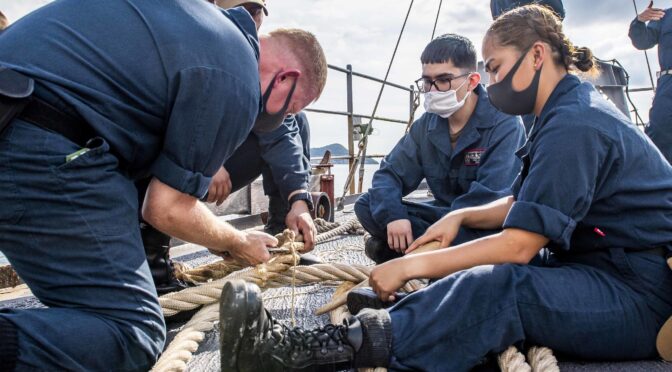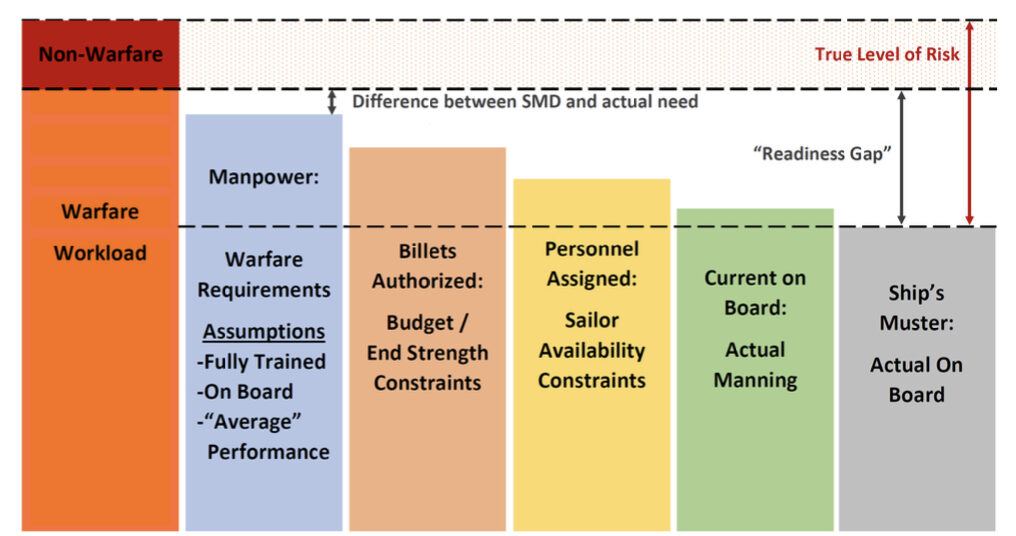By Shelley Gallup
In past wars, small and well-armed ships, such as destroyer escorts, torpedo boats, and riverine craft have been a necessary complement to large combatant force structure. This need is being exacerbated by the U.S. Navy’s currently small yet top-heavy fleet structure. This contrasts with the force structure and operational concepts of Chinese maritime forces, which have been highlighted by the intrusions of PRC naval, Coast Guard, and maritime militia ships into the territorial waters of the Philippines. The Philippine Navy has only three ships to meet these threats, creating demands for U.S. naval presence that is already stretched thin among its relatively few large combatants. China’s numerous small combatants and maritime auxiliary forces would surely have important wartime roles to play as well, and U.S. large combatants may not be available to address these threats.
Innovation in maritime warfare is strategically significant, continuous, difficult to achieve, and must fight its way through an existing paradigm. Often, by the time innovation is adopted, another construct is appearing on the horizon, resulting in a continuous tail-chase. The U.S. Navy continues to push after esoteric technologies, rather than adopting near-term and less costly capabilities. The proposal here, in support of the bi-modal fleet concept featuring a mix of sea denial and sea control vessels, is the LMACC (Lightly Manned Automated Combat Capability) system. This small combatant vessel concept extends autonomy, machine learning, resilient comms, and passive sensor fusion within a cloud shared by a flotilla or other forces.
The bi-modal fleet structure includes a combination of small, crewed, and autonomous systems working as a networked flotilla. The crewed LMACCs and uncrewed autonomous surface vessels can be built and armed for much lower costs and greater capability than the cost of building one or two more destroyers or frigates. In this systems view, it is the holistic flotilla network that is the capability, rather than the individual platform. The uncrewed vessels act as sensors, and the LMACCs serve as decision arbiters and weapons carriers.

LMACC will also serve a critical function in developing future combat leaders. In today’s destroyer-centric surface fleet, platform command opportunities only appear after more than a decade of service. LMACC is intended as an O-3 command, affording naval officers an opportunity to command earlier in their careers and develop critical leadership skills, including initiative, adaptability, and tactical acumen. Autonomous systems will become increasingly important, but cultivating warrior skillsets earlier in careers will be central to victory.
LMACC is the culmination of three years of research and development at the Naval Postgraduate School, via OPNAV N96F sponsorship with the Naval Research Program (NRP). It is now being considered as an Innovation Capstone Program (ICP), for potential transition to an industry partner for prototype acquisition. At an estimated cost of about $100 million per ship, built in small yards, it is much more affordable than other Navy surface combatants, and will invigorate diversification of the shipbuilding industrial base.
Small warships have a long history in the U.S. Navy, and are poised to offer an evolutionary leap in capability. Small, highly automated, lightly crewed, blue water warships will help offset the capabilities of competing fleets and ensure enduring maritime superiority for the U.S. Navy. It is time to fund and build a prototype of the LMACC and its flotilla innovations.
Dr. Shelley Gallup is a retired surface warfare officer. As an Associate Research Professor at the Naval Postgraduate School, Dr. Gallup has spent 25 years assisting the Navy in developing large-scale experiments at sea. His current work includes research in human-machine partnerships, the role of emergence in combat at sea, and leads the small warship LMACC project at NPS.
Featured Image: The Independence-variant littoral combat ship USS Gabrielle Giffords (LCS 10) leads the formation in a photo exercise with the unmanned surface vessels Ranger and the USV Mariner during Integrated Battle Problem (IBP) 23.2, Sep. 7, 2023. (U.S. Navy photo by Mass Communication Specialist 2nd Class Jesse Monford)





